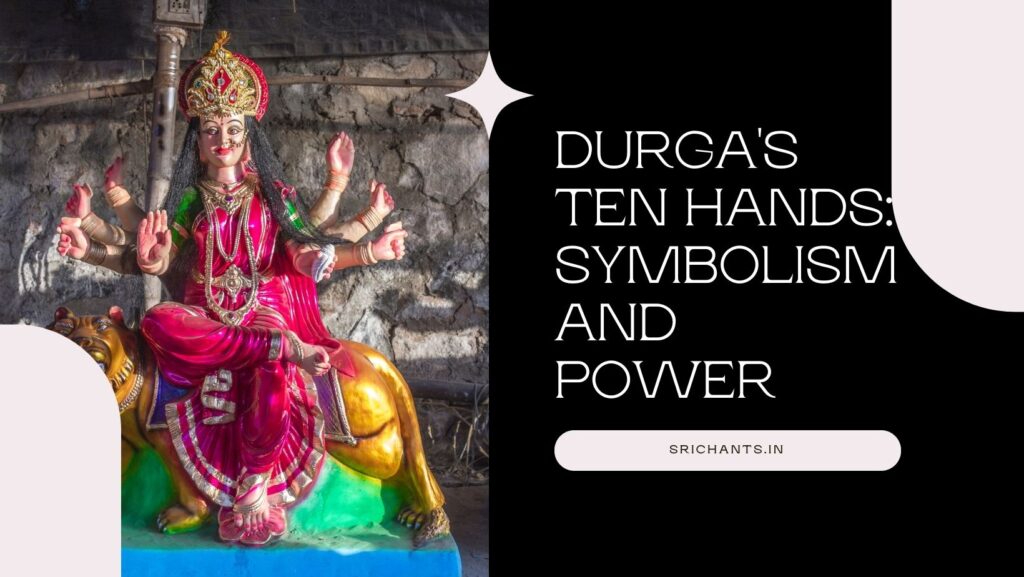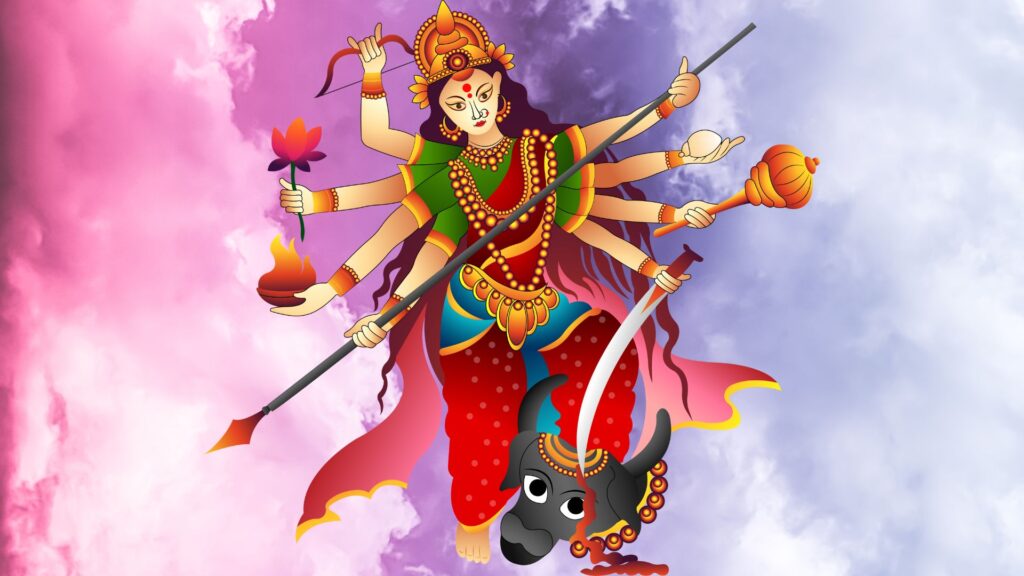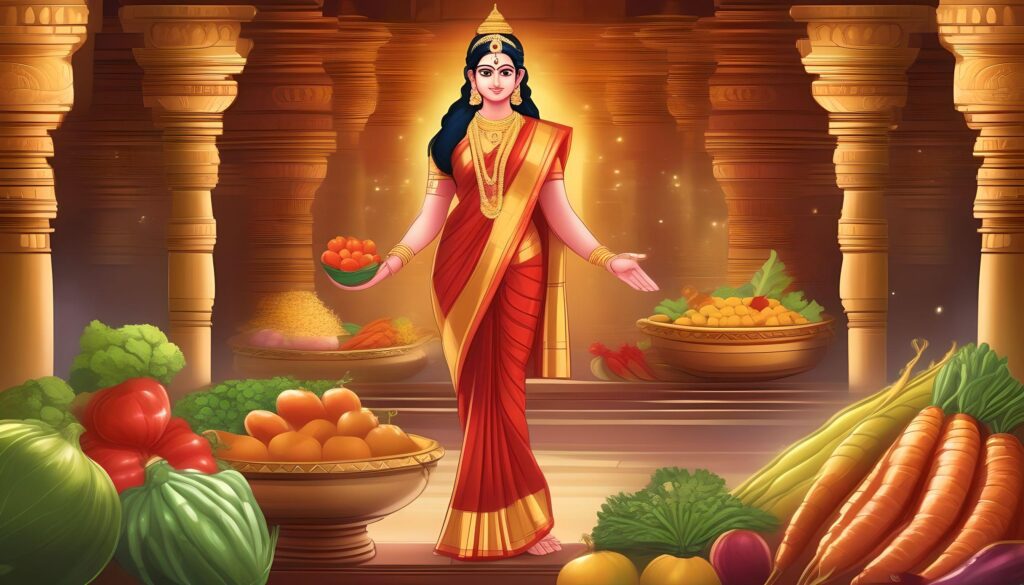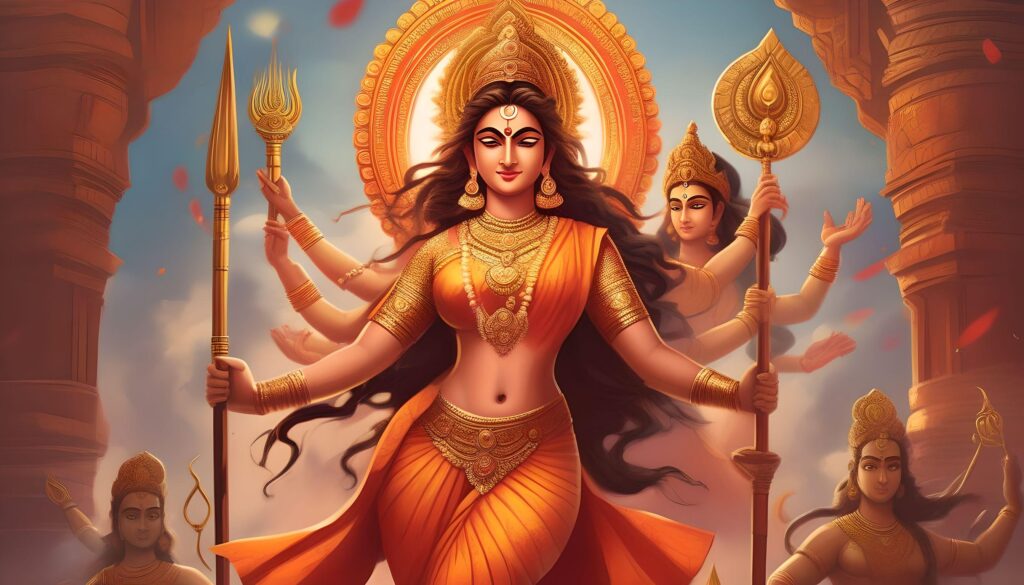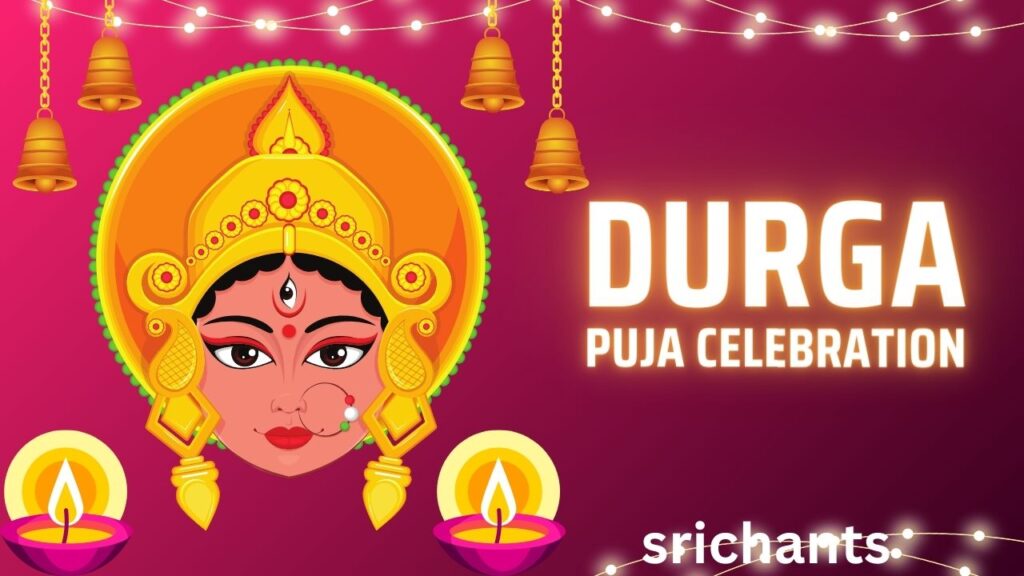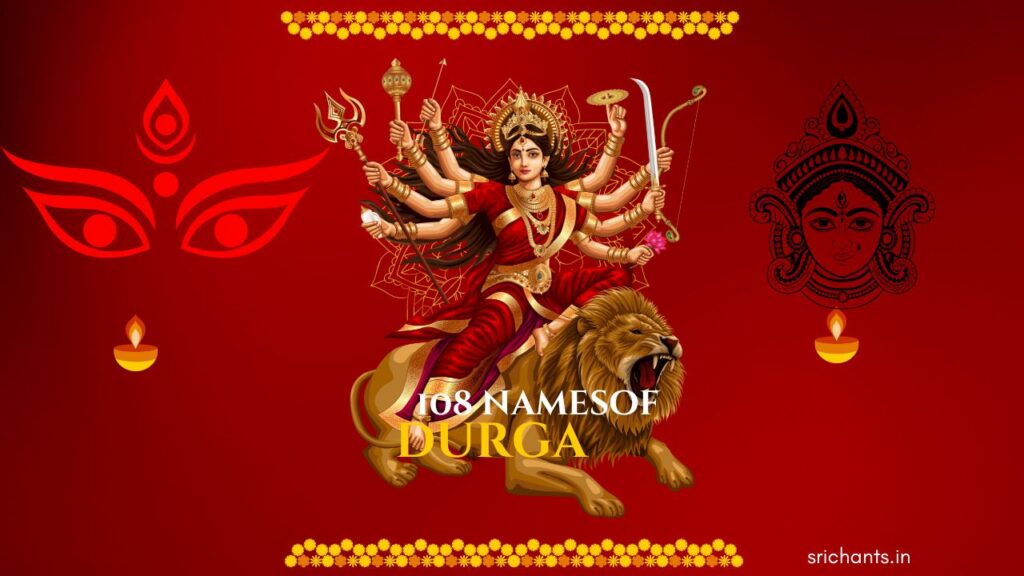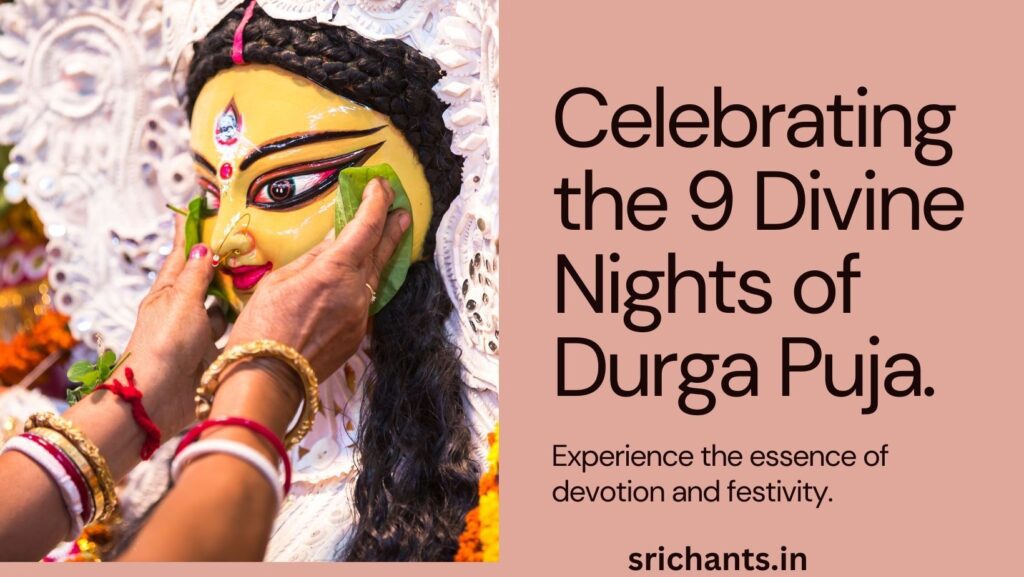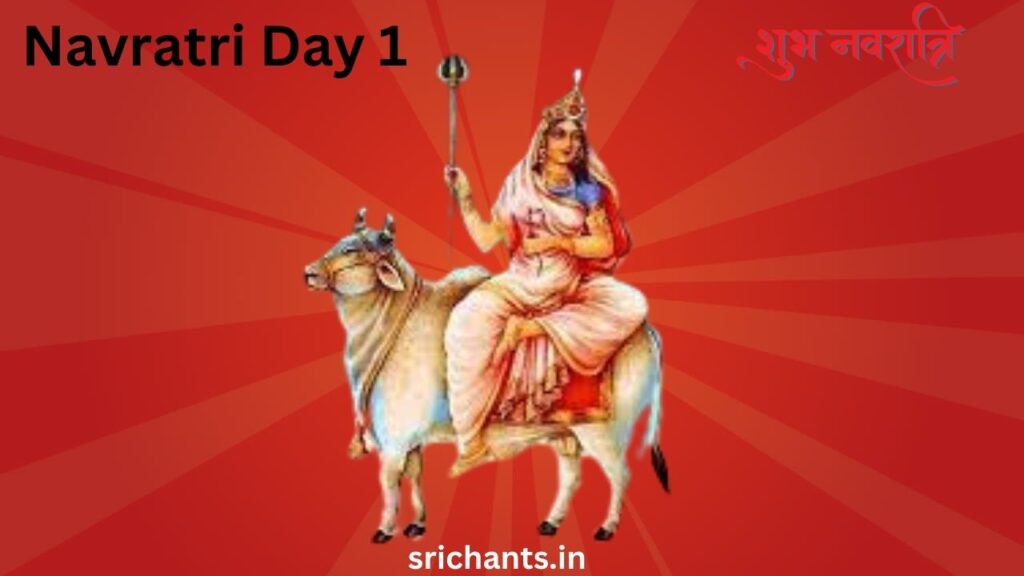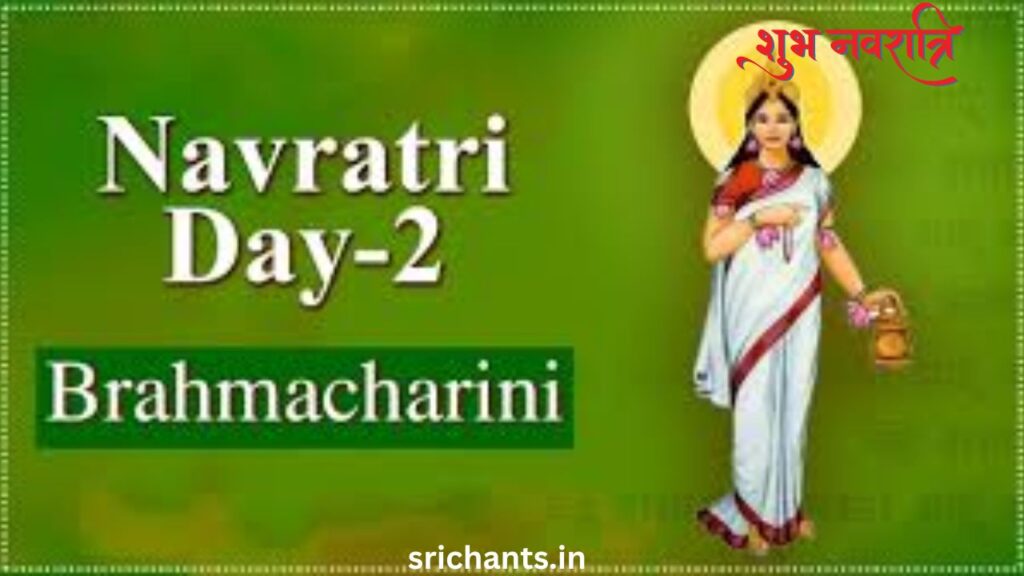Durga Maa Symbol : Symbolism of Goddess Durga’s Ten Hands
Introduction
Goddess Durga is a revered figure in Hindu mythology, noted for her unyielding spirit and her capacity to combat evil. The ten hands of Goddess Durga, each of which holds a distinct weapon, are one of the most distinctive features. The ten hands are a representation of the diverse shaktis, or powers, that humans possess. This article will investigate the profound significance of each of these weapons and the symbolism that underpins them.
1. Conch Shell (Shankh)
The conch shell, also referred to as Shankh, is the initial weapon that Goddess Durga possesses. The conch shell is believed to produce the most sacred and pristine sound in the universe. It represents the predominant reverberation of God’s voice in comparison to all other sounds. The conch shell is a symbol of the divine vibration “OM,” which signifies the presence of the divine in all things.
2. Bow & Arrow
The bow and projectile are the second weapon in Goddess Durga’s possession. This is a representation of vitality and power. Goddess Durga is the ultimate controller of all its elements and possesses the energy of the entire universe, as evidenced by the bow and arrow’s presence. It symbolizes the capacity to channel and direct one’s energy toward the accomplishment of objectives and the surmounting of challenges.
3. Thunderbolt (Vajra)
The third weapon that Goddess Durga possesses is the thunderbolt, or Vajra. It is indicative of resilience and stability. In the same way that lightning shatters anything in its course, the thunderbolt symbolizes the strength and determination required to surmount obstacles and adversities. It instills in us the resolve to remain unwavering and steadfast in the presence of adversity, with the assurance that we can prevail over any circumstance.
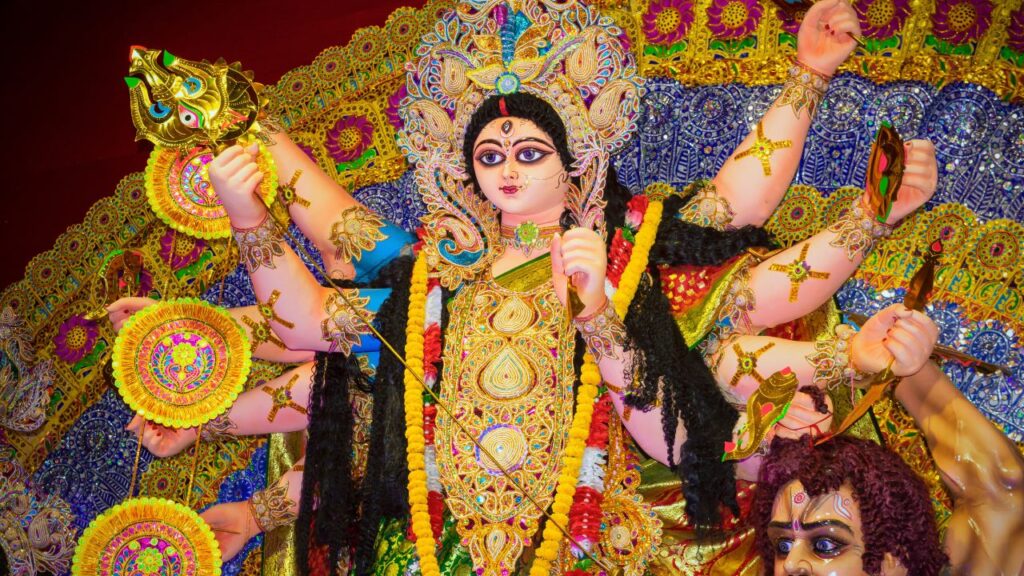
4. Half Bloomed Lotus
The transience of achievement is symbolized by the half-bloomed lotus in Goddess Durga’s hands. It suggests that success is achievable, but it is not enduring. In the same way that a lotus blossoms amid the mud, humans must endeavor to maintain interior beauty and evolve spiritually amidst the materialistic pleasures of the world. Even in the midst of worldly pursuits, the half-bloomed lotus serves as a reminder to pursue spiritual development and enlightenment.
5. Sword
The sword that Goddess Durga wields is a representation of knowledge. It symbolizes the capacity to distinguish between right and evil and the influence of intellect. The sword’s sharpness and luster symbolize the power of knowledge, which can penetrate ignorance and illuminate the most obscure regions. One can achieve enlightenment by overcoming obstacles and conquering any battle with the sword of knowledge.
6. Sudarshan Chakra (Discus)
The Sudarshan Chakra, or discus, that Goddess Durga carries is symbolic of her capacity to regulate and govern the operations of the universe. It serves as a representation of divine intervention and safeguarding. The Sudarshan Chakra is a symbol that Goddess Durga possesses the ability to resolve all issues and eradicate evil from the universe as needed. It teaches us to rely on her guidance and request her assistance when necessary.
7. Trishul (Trident)
Trishul, or the trident, is a potent weapon that embodies the three attributes of human nature: Rajas, Tamas, and Satva. It symbolizes the significance of preserving a harmonious equilibrium between these attributes in order to achieve salvation, serenity, and peace. The trident in Goddess Durga’s hand serves as a reminder to us to strive for a harmonious equilibrium of purity, inertia, and fervor in our lives.
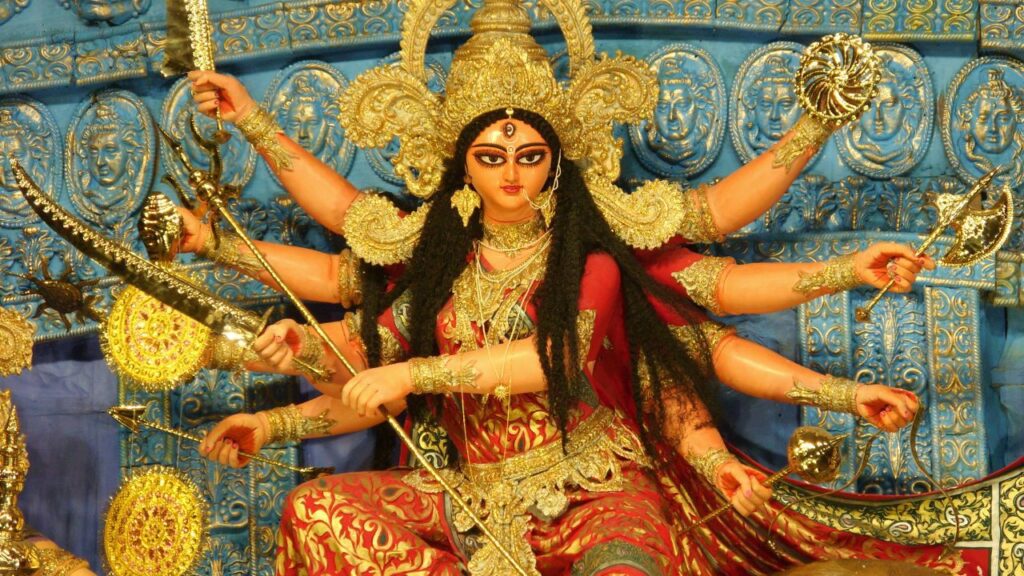
8. Abhaya Mudra
Abhaya Mudra is a hand gesture that denotes the absence of dread. The constant protection and guidance of Goddess Durga are underscored by the fact that one of her palms is perpetually in the position of blessing her devotees. The Abhaya Mudra serves as a reminder that we are not required to be apprehensive in the presence of her graces. It instills in us a sense of confidence and courage, ensuring that we are always under her protection.
9. Mace
The mace that Goddess Durga wields is a representation of devotion, respect, and loyalty. It symbolizes the significance of maintaining love and devotion as the governing principles of our lives and remaining faithful to the divine. In the same way that the mace is a symbol of protection and strength, our devotion and loyalty to Goddess Durga provide us with inner strength and defend us from negative influences.
10. Snake
The snake in Goddess Durga’s hand represents the transition from a lesser state of consciousness to a higher state. It symbolizes the ascent toward spiritual awakening and pure joy. The snake is a symbol of energy and consciousness, encouraging us to cultivate our inner potential and elevate our consciousness in order to achieve the ultimate state of liberation and pleasure.
In summary, the ten hands of Goddess Durga and the weapons they wield are not only symbols of power, but they also possess profound spiritual and philosophical significance. Each weapon embodies a distinctive aspect of human nature and imparts valuable lessons for overcoming life’s obstacles. By comprehending and embodying these attributes, we can invoke the guidance and protection of Goddess Durga in our lives.
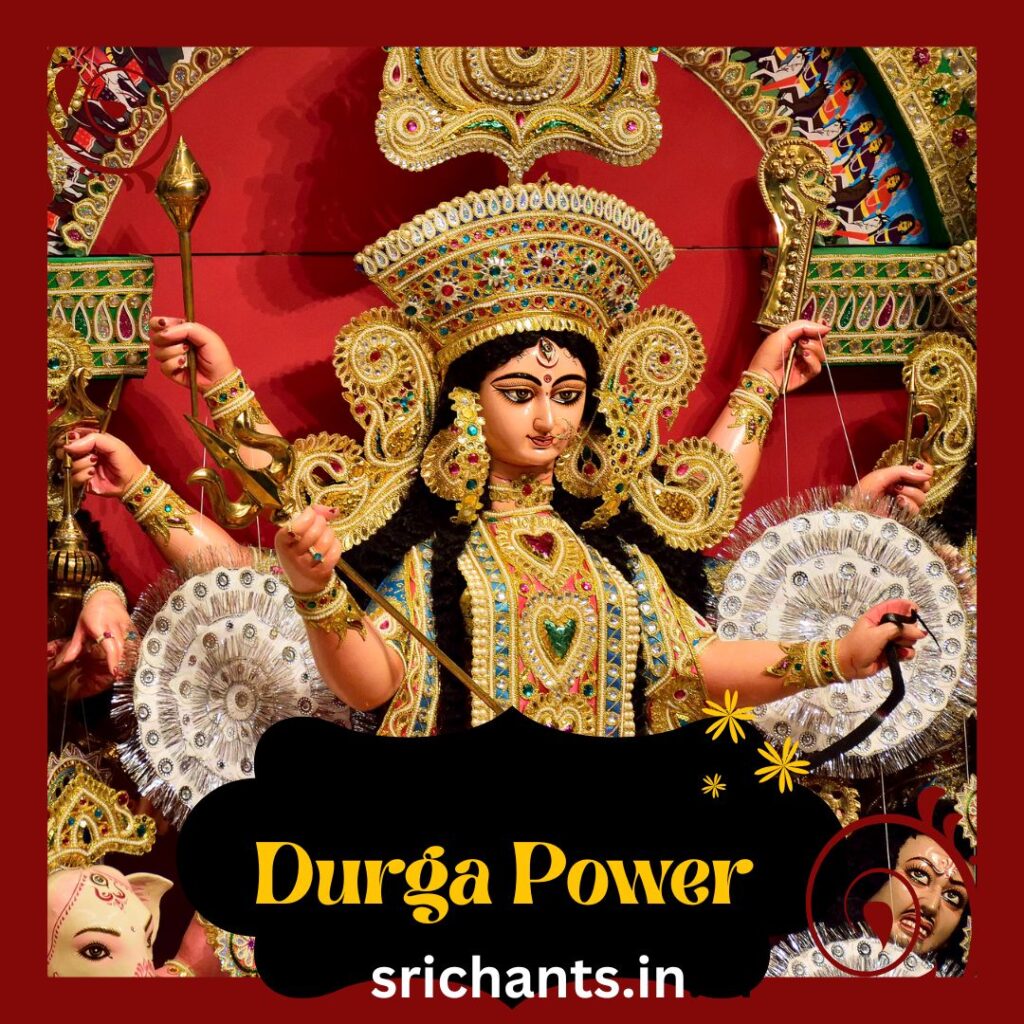
#durga #maa #symbol #durgamaasymbol
